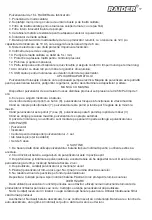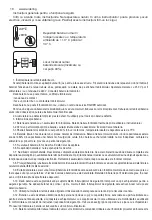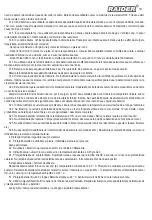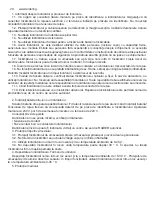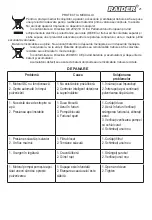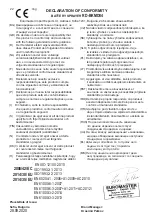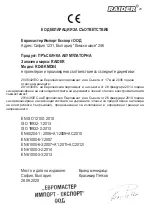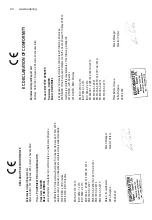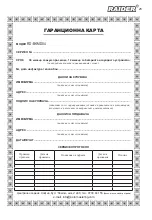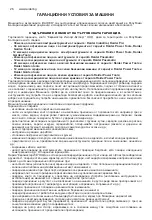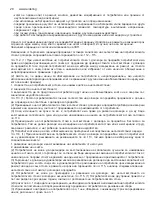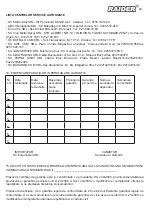
14
www.raider.bg
1. Information about the charger and the charging process.
1.1. Please see the data marked on the charger nameplate. Be sure to connect the charger to the mains with
the voltage indicated on the nameplate. Never connect the charger to a mains voltage.
1.2. Protect the charger and its cord from damage and sharp edges. Damaged cables must be repaired
immediately by a qualified electrician.
1.3. Keep the charger out of the reach of small children.
1.4. Do not use damaged chargers.
1.5. Do not use the supplied charger to charge other rechargeable batteries.
1.6. This charger is not intended for use by persons (including children) with limited physical, sensory or
mental capabilities, or persons without experience and knowledge of the equipment, unless the use is under
supervision or in accordance with the instructions for use of the device provided by persons responsible for
safety. Children should be careful not to play with the equipment.
1.7. The charger must not be exposed to moisture or water. Water entering the charger increases the risk of
electric shock. The charger can only be used indoors, in dry rooms.
1.8. Before carrying out any maintenance or cleaning work on the charger, disconnect it from the mains.
1.9. Do not use the charger on a flammable surface (eg paper, cloth) or near flammable substances. Due to
the heating of the charger during charging, there is a risk of fire.
1.10. Before each use, check the condition of the charger, cable and plug. In the event of damage, do not
use the charger. Do not attempt to disassemble the charger. All repairs must be assigned to an authorized
repair service. Improper installation of the charger may result in electric shock or fire.
1.11. When the charger is not in use, it must be disconnected from the mains.
1.19. It is forbidden to repair a damaged charger. Repairing the charger is only permitted by the manufacturer
or an authorized service center.
2. Charge the lithium-ion battery with the charger.
Remove the battery from the machine by pressing the button. Pay attention to the mains voltage when
charging the battery! The mains voltage must correspond to the data on the charger nameplate. Appliances
marked with 230 V can also be supplied with a voltage of 220 V.
Plug in the wall socket.
If the battery cannot charge, check the following:
• contact voltage
• Makes good contact with the charger contacts
If the battery still cannot be charged, visit an authorized RAIDER Service Center.
3. Protection from the environment.
3.1. Protect the charger from moisture and rain. Moisture and rain can cause dangerous damage.
3.2. Do not use a charger or battery near flammable vapors and liquids.
3.3. Use the charger only in dry places and at an ambient temperature of 0-45 C ֯.
3.4. Do not store the charger in places where the temperature may exceed 30 ° C. In particular, do not leave
the charger in a car parked in the sun.
4. Storage of the charger. Terms of use.
Store the charger only in a dry place and at an ambient temperature of 10-30 C ֯. Protect them from moisture
and direct sunlight. When operating, use the charger only in a dry place and at an ambient temperature of 0-45
° C.

















